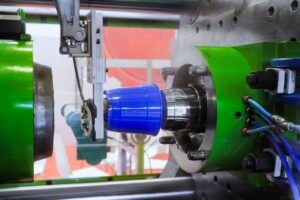In the realm of injection molding, it is important that high-quality pieces with consistent finishes are crucial. However, one issue that can mar both appearance and functionality is splay which is common.
A defect resulting in streak marks on the surface of molded parts is referred to as splay injection molding, which may look like silver or white lines in many cases. These streak marks can ruin the aesthetic appeal of a product and sometimes its structural integrity could be compromised. In order to make top-level products, manufacturers must comprehend the causes behind splay injection molding and how to prevent it.
What Does Splay Mean in Injection Molding?
Splay – what is it? It’s an optical fault that manifests itself as tinted strips (bands) on the parting line of a moulded object. Silver or colourless, such strip patterns are determined by different factors leading to their occurrence. Splay occurs due to moisture entrapment, air entrapment and material degradation during the injection molding process.
Causes of Splay Injection Molding
Moisture within Material
Presence of moisture within raw materials is one major cause for happening of splay. Thus, when the moisture laden material gets heated during molding process water turns into steam which might get trapped inside mold thereby resulting into streak marks on the surface of part.
Degradation of Materials
Material degradationis another factor causing splay defects. This may happen due to over heating or storage for long periods under improper conditions. Consequently, gases from degraded materials may cause splay.
Stagnant Air or Gas
The presence of stagnant air/gases in between molds causes another scenario where there can be a formation of splays. This takes place when molds do not vent sufficiently well or when injection speed becomes too high hence trapping air within flows entering molds.
Pollution
Other substances such as oils, greases and other plastics being mixed with the raw material may also result into splay.
Ways of Avoiding Splay in Injection Molding
Manufacturers can take some precautions to prevent splay and subsequent streak marks:
Proper Drying of Material
Ensuring that the raw material is fully dried before it gets moulded is crucial. Moisture in the material can be got rid off by using dehumidifying dryer such that no steam will be formed during molding.
Optimize Molding Parameters
Adjustment of molding parameters, including temperature, injection speed and pressure, may reduce chances for splay occurrence. The right balance needs to be struck so as to avoid overheating or degradation of materials but at the same time permit proper flow into a mold.
Improve Mold Ventilation
The chances of air trapping or gas entrapment during the process can be minimized through improving ventilation systems within a die. Proper venting provides for gases to release which would otherwise cause splays otherwise.
Regular Maintenance and Cleaning
For instance, cleaning and regular maintenance practices applied on both mold cavities and injection machines help eliminate contamination risks, ensure the preservation of the mold texture, and contribute to the flawless operation of the molding machine.
Conclusion
Splay injection molding is a typical problem that can significantly influence the quality of molded components, especially their appearance as well as structural integrity. By recognizing causes of splay such as wetness, material decay, entrapment of air and pollution and then undertaking preventive steps to mitigate these problems, manufacturers are able to reduce occurrences of streaks and produce parts that are good in quality.
Read more:
Understanding Splay Injection Molding and How to Prevent Streak Marks














